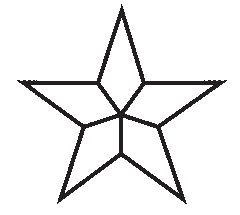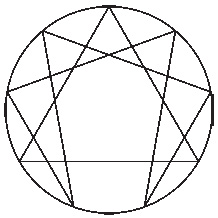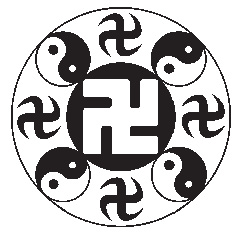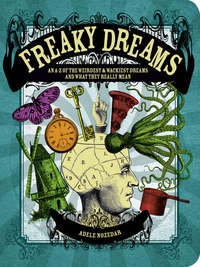
Полная версия
The Element Encyclopedia of Secret Signs and Symbols: The Ultimate A–Z Guide from Alchemy to the Zodiac
DRUZE STAR

This five-pointed upright star, comprised of five distinct diamond shapes, is the emblem of the Druze faith, an offshoot of Islam. Each segment is often colored according to its meaning.
The five points of the star remind followers of the religion of the five universal principles of the faith:
1 The masculine element, the Sun and the mind. This segment is often colored green.
2 The feminine element and the Moon, colored red.
3 The Word, considered the mediator between the Divine and humankind, colored yellow.
4 Will and the realms of possibility, colored blue.
5 Finally, the white segment of the star represents actualization, the manifestation of the Word and the Will.
EGG

The egg is as powerful in its symbolism as it is potent as a life-force. The World Egg is a ubiquitous symbol for the egg from which the Universe is said to have hatched, an idea that appears in creation myths from all parts of the world. The Celts, Hindus, Egyptians, Greeks, Phoenicians, and many more all agree about this idea.
The form this cosmic hatching takes is variable though. Often, the egg rises from primeval waters and is incubated by a bird; in Hindu belief, this is the Hamsa, a goose. When the egg hatches, the yolk and the white become Heaven and Earth.
The Shinto tradition says that the Universe resembled a giant hen’s egg that broke open, with the heavier parts becoming the Earth and the lighter, the Heavens. There is also a theory that the entire Universe is contained in a huge egg that stands upright.
The egg is a symbol of new life, and this idea is borne out with chocolate eggs at Easter, which in itself is a celebration of the pre-Christian fertility Goddess, Eostre, who also gives her name to the hormone estrogen. The subsequent celebration of Christ’s death and resurrection meant that the egg kept its significance as a symbol of new life and hope. Archeologists have found clay eggs in Russian burial sites, reinforcing the belief in the egg as a symbol of immortality and of rebirth.
In alchemy, the Philosopher’s Egg symbolizes the seed of spiritual life, and depicts the place wherein a great transformation takes place.
The ancient riddle of what came first, chicken or egg, was deftly if disappointingly answered by Angelus Silesius, who said:
The chicken was in the egg and the egg was in the chicken.
ELVEN STAR

This seven-pointed star has several different names and occurs in many different magical traditions, including Sacred Geometry. Most prosaically, it is known as the septagram. For wiccans and pagans it is also called the Faerie star, for others it might be referred to as the star of the Seven Sisters since it is associated with the cluster of seven astronomical stars called the Pleiades (or Flock of Doves). These celestial sisters were believed to guard the Axis Mundi as depicted by the Pole star.
Wherever it occurs and by whatever name it is known, the Elven star is a reminder of the sacred significance of the number 7; the seven days of the week, the seven planets of the ancient tradition, the seven magical metals, and the seven pillars of wisdom. For the Egyptians this star represented the seven spheres of the Afterlife and the seven wise people that the soul would meet on the journey.
The septagram is also an important symbol in the Kabbalah where it corresponds to the sphere of Netzach or Victory. Here, too, it acts as an aide memoire for all the things that come in groups of seven.
Like the pentagram, the Elven star can be drawn without the pen leaving the paper, a tell-tale quality of a protective symbol. Specifically, the Elven star is said to defend secrets from the outside world.
Aleister Crowley adopted a seven-pointed star as the seal for his Astrum Argentum (Silver Star) Order.
EMERALD TABLET
See Smaragdina Tablet.
ENDLESS KNOT

Different interpretations of the Endless Knot occur in different cultures, including Celtic, Chinese, and in Tibetan Buddhism where it is one of the Eight Auspicious Symbols, or Ashtamangala. The knot can be drawn without the pen leaving the paper—this is generally a clue that the symbol is one of protection.
Philosophically, the knot is constructed of “something” (the rope, representative of matter) and “nothing” (the spaces in between), symbolic of spirit. These two elements represent the co-dependence of wisdom and compassion, male and female, night and day.
Since the knot has no beginning and no end, there are also comparisons to be drawn with the circle.
ENNEAGRAM
This nine-pointed geometric figure, with an open side, is an ancient sign that, in Kabbalistic mysticism, is described as “the essence of being.” It was revived by G. I. Gurdjieff, the mystic/teacher whose teachings have had a far-reaching effect on the last few generations of esotericists. Gurdjieff used this deceptively simple shape to demonstrate his theories about certain cosmic laws. The primary law that the Enneagram demonstrates is the natural “highs” and “lows” of any aspect of life, whether emotional, mechanical, or commercial. Those who have studied the Enneagram in depth believe that it helps them to accept these fluctuations as part of the natural order.

The Enneagram of Personality sees the symbol used as a way to define the nine different personality types identified by Gurdjieff.
ENSO
Belonging to Zen Buddhism, the Enso is a circle, drawn quickly and simply with a brush stroke,

although years of practice in the art of calligraphy are likely to have preceded the ease with which the symbol can be drawn. The Enso symbolizes eternity, the perfect meditative state, the “no thing,” and enlightenment.
EVANGELISTS’ SYMBOLS
The four evangelists—Disciples of Christ who witnessed and wrote about the events in the life of the Messiah, which comprise the four main books of the New Testament—are often represented not as men but as hybrid creatures. Not only that, but the four men—Matthew, Mark, Luke, and John—are each associated with the four points of the compass, the elements, the winds, and with the four rivers purported to run through Eden. Each evangelist is also ascribed a sign of the Zodiac. Collectively, they symbolize stability and the four pillars of the faith.
The angel is the symbol of Matthew. Mark is the lion, whose symbol in stone proliferates around St. Mark’s Square in Venice. The bull is the symbol of Luke, and the eagle represents John. Wherever they are represented, these creatures have wings, as a sign of their divine nature as messengers from God. These hybrid animals are also called the Tetramorphs.
EVIL EYE
This is a gaze or stare which is believed to cause actual harm. There are numerous talismans, amulets, and charms intended to counteract the affect of such a deadly gaze. See Eye (Part 8).
FALUN GONG SYMBOL

The symbol for the philosophy or spiritual practice of Falun Gong is an amalgam of two ancient Eastern signs. Two concentric circles encompass a central swastika, while four yin-yang signs and four further swastikas are evenly spaced around it.
Falun Gong itself is a relatively new movement—it was founded as recently as 1992 by Li Hongzhi—although its practices are based on the ancient art of Qi Gong. Falun Gong relies on certain physical movements and meditation techniques to promote health, harmony, and the balance of mind, body, and spirit although the Chinese government denounced Falun Gong as a “cult.”
“Falun” means “Wheel of Law/ Dharma” in Chinese Buddhism, and the wheel symbol itself (the “Falon”) replicates the energy wheel that adherents of the practice say is located in the center of the body, akin to a chakra. This wheel, once “installed” or awakened, turns continuously, when clockwise absorbing energy from the cosmos, or when anticlockwise, getting rid of waste matter from the physical body. Adepts say that meditation and repetition of the set exercises of the Falun Gong discipline result in them actually being able to see the Falun. The Falun Gong emblem also acts as a mandala or also as a cosmogram, a miniature schematic of the Universe.
FAROHAR

A version of the winged solar disc, the Farohar is a Zoroastrian symbol whose name means “to choose.” The symbol represents some of the philosophical facets of the religion.
The three layers of feathers on the wings represent the three main tenets of the faith; good thoughts, good words, good deeds. The disc itself symbolizes the Sun, and the notion of eternity. The two banners are a reminder of duality (good and evil, black and white, spirit and matter, male and female) and the need for balance between opposing elements.
The man seeming to sit on the top of the disc represents Zoroaster himself, and serves as a reminder for his followers to live a morally upright life.
FASCES

A symbol of Roman Imperial power, the Fasces was originally an axe or an arrow with a bundle of birch sticks tied around the handle with red cords. The numerous sticks represented unity and strength in numbers, but as a symbol of authority, it also implied punishment for those who failed to adhere to the rules. The birch rod itself is synonymous with the idea of punishment, its wood used for the schoolroom canes that were inflicted on children in less enlightened times.
The symbol of the Fasces carried great resonance for the Italian people and was revived by Mussolini as the emblem of his political party in the 1930s. Hence, the Latin word for “bundle” became the origin of the word “Fascist,” which carries far more sinister connotations than a simple collection of sticks.
FEATHER

The Egyptian Goddess of truth, Ma’at, has the ostrich feather as her attribute. There is a very specific reason for this. Because the ostrich is a flightless bird, the design of its feathers is different to those of other birds where one side is larger than the other. The ostrich feather, however, is perfectly balanced and symmetrical, and so is a fitting emblem of justice.
The symbolism of feathers is closely aligned to that of wings and birds. They stand for ascendance, flight, communication with the spirit realms and the element of air. Shamanistic use of feathers is for all these reasons; the feathers enable the soul to become as light as the feather and transcend the boundaries of gravity, time, and space. Shamans of all nationalities wear feathers as a part of their ritual apparel.
The eagle feather is the most valuable of all feathers. In some parts of the world, this feather, synonymous with all the power of the bird, is considered so sacred that only card-carrying Native American tribal members may own them. Eagle feathers that are found in the wrong hands are the cause of heavy fines.
The swan’s feather appears in the cloaks of druids; because the swan is the bird of poetry, its feathers magically confer these powers on the bard.
Used at the end of the arrow as a “flight,” feathers have a practical as well as symbolic use. Additionally, feathers are a symbol of sacrifice. This is because, when chickens and other birds were ritually slaughtered, all they left behind was a few feathers, fluttering to the ground.
The other major symbolic meaning of the feather associates it with vegetation and with hair, primarily because of a similarity in appearance.
FETISH
Although, latterly, the fetish has erotic connotations, the origins of the word are from the French fétiche and the Portuguese feitiço, meaning charm. In sorcery, a fetish is something that is believed to have a spirit of its own, used for magical purposes. It is likely that the first fetish objects were stones of some kind, not necessarily small ones. The Black Stone at Mecca and the Stone of Destiny are good examples of fetish objects whose power, as such, has accumulated over the centuries that people have revered them. “Lucky” or “unlucky” numbers are fetishes, as are “lucky” or “unlucky” days of the week.
Bodily fluids or parts such as fingernails and teeth are fetish objects, considered to contain the energy of the creature of origin. Smaller fetish objects were carried in pouches or bags, a practice that continues today in many forms. These fetish or medicine bags should never touch the ground. The reason for this is that contact with the Earth is sacrilegious in some way for these empowered objects. It is for exactly the same reason that flags, symbols of national identity, also never touch the ground.
FIRE WHEEL
See Tomoe.
FIVE PILLARS OF WISDOM
Islam is conceptualized as a building, which is raised on five “pillars.” These are: the tenets of the faith, prayer, almsgiving, fasting during the month of Ramadan, and the pilgrimage (or Hajj) to Mecca (which each adherent of the faith must carry out at least once in his or her lifetime.)
FLEUR DE LYS

Seen regularly as a heraldic symbol, the stylized flower-inspired Fleur de Lys is much older than many people may realize, appearing in Mesopotamian art, on Ancient Egyptian reliefs, and even on Dogon objects. The literal translation is the “flower of the lily” and it is a symbol of purity, being associated with the dove and the Virgin Mary. At Rennes-le-Château, the Fleur de Lys is a prominent symbol, too, in the Church of Mary Magdalene.
FLOWER OF LIFE

The ubiquity of this beautifully satisfying geometric symbol is astonishing. It appears at the Golden Temple in Amritsar, in a Buddhist temple at Ajanta, India, in the Louvre and at Ephesus. It has been embroidered onto the robes of Sultans. It can be seen in Cordoba, in Marrakech, in Beijing, the Lebanon, in Egypt, and Japan. It is chiseled into wood in Holland and carved into stone in Scotland and Austria. The oldest example of the Flower of Life is believed to be 2500 years old.
The Flower of Life design is deceptively simple. It consists of a series of evenly spaced interlinking circles. As more circles are added, the pattern emerges. The design has been favored by religions, architects, and scientists alike.

Flower of Life showing Kabbalistic tree of life
Despite the seeming simplicity of the design, hidden within it are subtle complexities that have such a profound meaning for some that they believe the Flower of Life depicts the fundamental forms of time and space.
The most obvious symbols inherent within the Flower of Life are the circle, the hexagon or six-pointed star, and the vesica piscis. Furthermore, three intersecting circles alone form a Borromean Ring which is also known as the Tripod of Life symbol.
Some important symbolic sequences can be derived from manycircled versions of the design, for example Metatron’s Cube can be derived from the Flower of Life, and the five Platonic solids can then be “extracted” from Metatron’s Cube. As if these fundamental principles of sacred geometry were not enough, the Kabbalistic Tree of Life can be discerned within the Flower of Life, as can the Seed of Life.
For many, the Flower of Life is an object of mystery which may well unlock the secrets of the Universe, since they believe that it contains a record of information about all living things. The Flower of Life is used as a focus both for study and meditation.
FORKED CROSS
See Y of Pythagoras.
FRUIT OF LIFE

The Flower of Life pattern, if constructed of at least five circles down and across, holds another symbol within it. This is the Fruit of Life, formed from a six-rayed star of five circles in all directions. There are 13 circles in total. This star shape then gives the foundation for the construction of Metatron’s Cube, from which, in turn, the five Platonic solids can be made.
FU

In China, the Fu is an ancient symbol of good luck, and is still popularly used in talismans and charms. The word “Fu” sounds like the word for bat; so, by association, bats are auspicious, too, especially if they are five in number. The actual ideogram of Fu shows a God blessing a farm, which is an analogy for the Earth; the farm is split into four parts, the four parts resembling the four directions and the four elements.
FURKA
See Y of Pythagoras.
GAMMADION
The gammadion is a form of swastika, but with shorter arms, and is so called because it is constructed from four Greek “gamma” letters. This sign was widespread, appearing across Europe and through to India. Like the swastika, it is a solar symbol, and the four arms of the symbol represent all the universal objects and concepts that come in groups of four: the directions, the seasons, the elements, the solstices, and the equinoxes.
GAR
See Gungnir.
FOOD MAGIC
Every week of the year, on most continents around this planet, millions of people participate in a profoundly magical ritual whereby two very basic everyday foodstuffs, which are available in supermarkets or on stalls pretty much anywhere you care to mention around the world, have a spell cast over them by means of a sacred incantation. The person officiating over this ceremony makes symbolic gestures with his or her hands and arms. This spellbinding usually takes place in a language very few fully comprehend, a language full of secrets, and as a result these mundane objects are transformed into something as mystical, sacred, and awe-inspiring as anything you could ever imagine.
In addition, this ritual generally takes place in a building whose architecture and design has been informed by knowledge of the directions, shapes, and patterns that link the Heavens with the Earth in an arrangement of the sacred symbols which some say were dictated to man by the very angels themselves.
When the Holy Communion of the Roman Catholic Church takes place, the simple ingredients of bread and wine are transformed, many believe, into the actual body and blood of the Christ. This is not just a symbolic representation, some say, but a very real and profound belief that underpins the foundations of the religion. By eating this holy, sacred food, imbued with magical intent, the recipient voluntarily absorbs the spirit of the Messiah.
The ritual and perceived reality of this act are inseparable, but bread and wine are not the only sacred foods we absorb as part of our everyday lives. We need food to live, so it comes as no surprise that we have accorded many ingredients with magical powers. Indeed, some of the things we eat every day carry both constituent elements and meanings which go far beyond mere nutrition. Many other foods—nuts, apples, and other fruits and vegetables—are covered in other sections of this book, and this is by no means an exhaustive inventory, but a look at some of the foods, real and mythical, which have become symbols in themselves.
AMBROSIA
For the Greeks, ambrosia was the food of the Gods. Given that it conferred immortality, the deities on Mount Olympus guarded it jealously. As well as ensuring eternal life, ambrosia could be used as an ointment that could heal any wound. However, for a mortal, eating ambrosia was a big mistake. Take the story of Tantalus, for example. He was invited to eat with the Gods, and so, presuming that he was accepted as one of them, he ate ambrosia. In the tradition of all good dinner party guests, he decided to return the favor and invited the Gods round to his place. Deciding somewhat sycophantically that they should feast upon all the good things that they had given him, he served up the flesh of his own children, and was banished to Hades.
CHOCOLATE
Long before the Western discovery of the Americas, the natives of Brazil, Mexico, the West Indies, and South America used the seeds of the chocolatl tree to make a stimulating drink. These bean-like seeds were cacahuatl, or cocoa. Primarily symbolic of love, chocolate is a sensual food with aphrodisiac properties that are due, in part, to association. However, its melting point is the same temperature as blood, a very satisfying sensation.
The botanical name of the plant gives a clue as to its sacred status. Theobroma cacao means “food of the Gods,” from the Greek “Theo,” meaning God and “Broma,” meaning food.
The beans were so highly valued that the Mayans used them as currency. Possibly the world’s first chocoholic, their ruler Montezuma was completely addicted to the beans. He drank them infused in cold water with no seasoning. He served this sacred drink in goblets of beaten gold, and at the coronation of Montezuma II in 1502 a concoction of chocolate and psilocybin mushrooms was served to the guests. This must have been a heady mixture.



